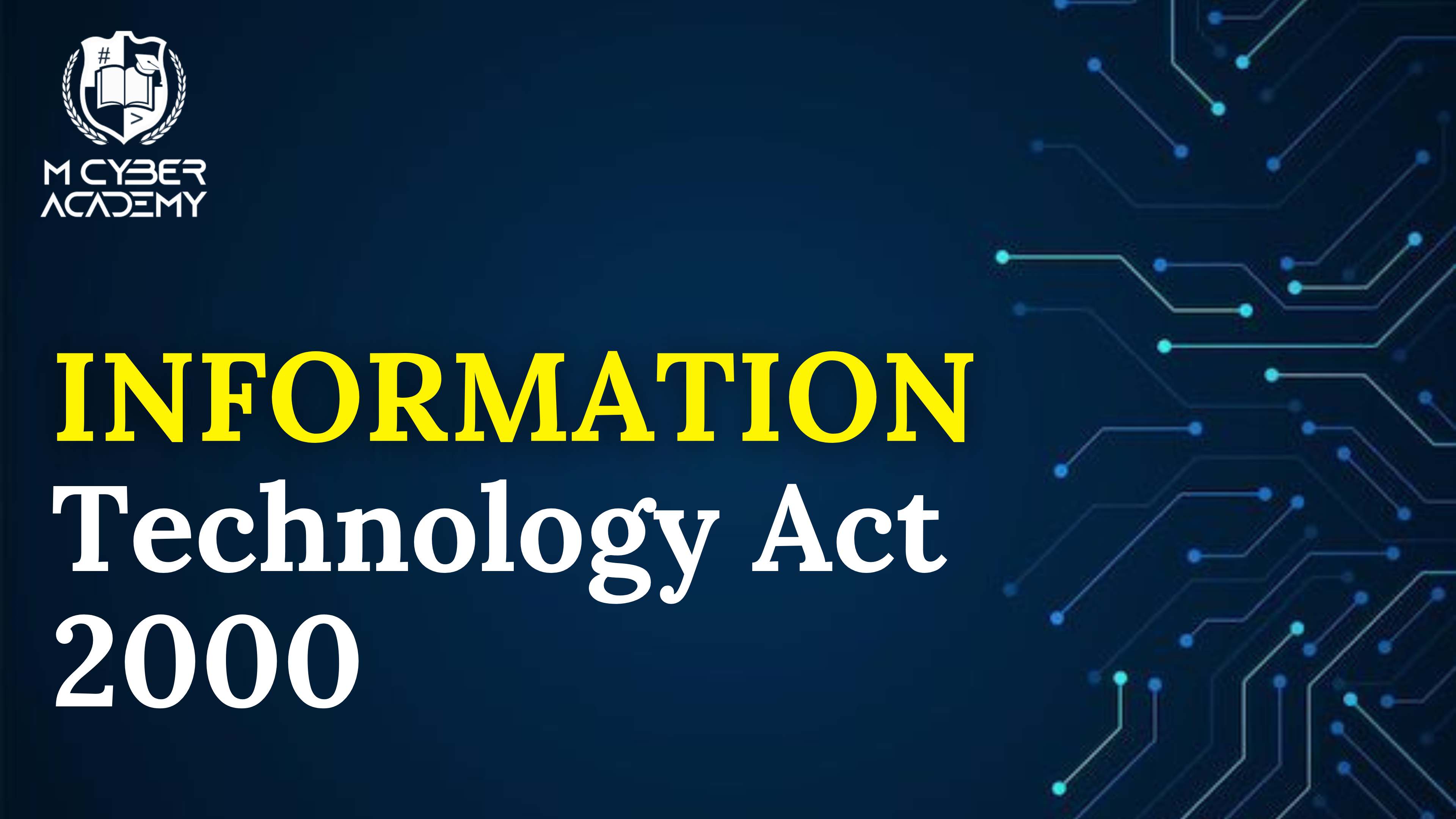
Overview of the Information Technology Act, 2000
"The [**Information Technology Act of 2000**](https://en.wikipedia.org/wiki/Information_Technology_Act,_2000) is the primary law in India addressing [**cybercrime**](https://en.wikipedia.org/wiki/Cybercrime) and electronic commerce. Passed by Parliament to provide legal status to electronic transactions and facilitate e-governance, it tackles issues such as electronic signatures, data privacy, and the establishment of certifying agencies. The Act also introduced amendments to other key laws, such as the [**Indian Penal Code (IPC)**](https://en.wikipedia.org/wiki/Indian_Penal_Code) and the [**Indian Evidence Act**](https://en.wikipedia.org/wiki/Indian_Evidence_Act)."
Overview of the Information Technology Act, 2000

The Information Technology Act of 2000 is the primary law in India addressing cybercrime and electronic commerce. Passed by Parliament to provide legal status to electronic transactions and facilitate e-governance, it tackles issues such as electronic signatures, data privacy, and the establishment of certifying agencies. The Act also introduced amendments to other key laws, such as the Indian Penal Code (IPC) and the Indian Evidence Act.
Key Features of the IT Act, 2000
Some important features include:
- Replacing digital signature with electronic signature for a more technology-neutral approach.
- Expanding the definitions of cybercrimes, fines, and the judicial framework for enforcement.
- Defining 'cyber café' as establishments offering public internet access.
- Establishing the [Cyber Regulations Advisory Committee].
- Granting the Act precedence over other laws, except for rights under the Copyright Act.
- Exempting certain documents, such as negotiable instruments and power of attorney, from its purview.
- Major revisions in 2008, including the controversial Section 66A, which was later struck down by the Supreme Court.
- Ongoing efforts to replace the IT Act with a comprehensive [Digital India Act].
Major Revisions in the IT Act

Significant revisions to the IT Act include:
- Section 29A : Defined electronic records to recognize electronic evidence.
- Several sections of the IPC, such as Sections 167, 172, and 173, were revised to include the terms 'electronic record' and 'document.'
- Section 118 and 119: These sections now cover the use of encryption and other information-hiding methods for concealing criminal designs.
- Section 464: Amended to use the term electronic signature instead of 'digital signature.'
Changes to the Indian Penal Code (IPC)
The IT Act introduced major changes to the Indian Penal Code (IPC) to align it with the digital age:
- Section 29A was added, and several sections were amended to acknowledge electronic records and documents as legitimate evidence in legal proceedings.
Amendments to the IT Act, 2000
- Section 66A (now struck down) was added in 2008, imposing penalties for sending offensive messages via electronic means.
- Section 69A empowered the government to block websites for reasons related to national security.
- Shreya Singhal v. Union of India (2015) led to the striking down of Section 66A, as it was deemed unconstitutional.
Information Technology Intermediaries Guidelines (2021)
In 2021, the government introduced new guidelines for intermediaries:
- Mandatory appointment of a [Grievance Officer].
- Establishment of a [Grievance Appellate Tribunal].
- User complaints must be acknowledged within [24 hours] and resolved within [15 days].
- Introduction of a Code of Ethics for news publishers, sparking controversy over free speech and press freedom.